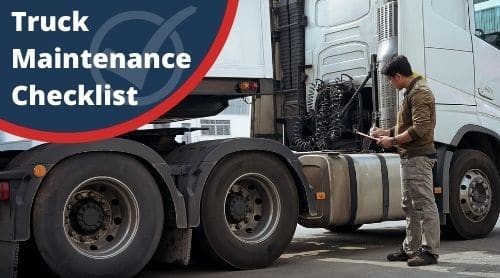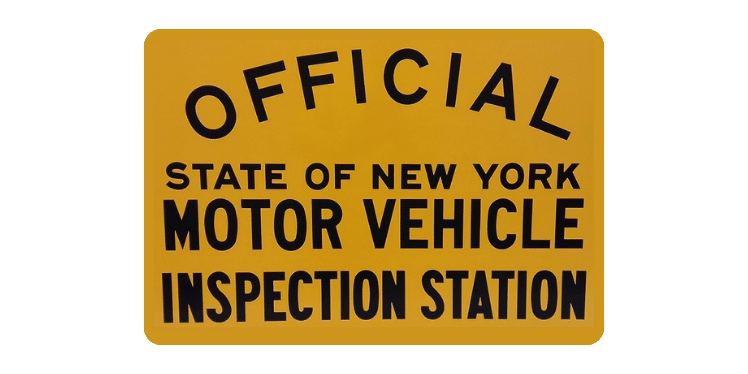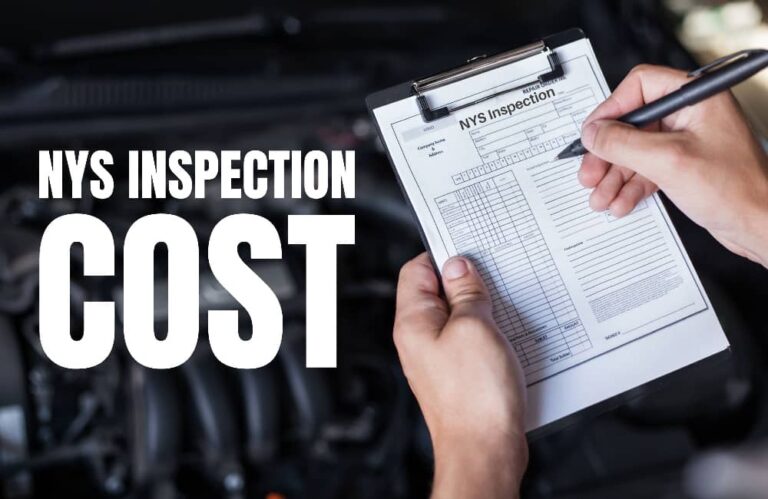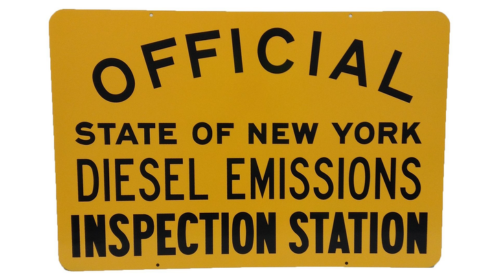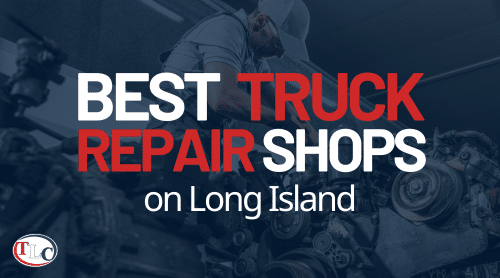Truck Maintenance Checklist
The sandwich that you just ate for lunch had most of its ingredients transported in a truck. The device that you’re reading this article was likely delivered on a truck. It wouldn’t be wrong to say that trucks make the world go round. After all, the trucking industry in the US is over $732 billion.
Trucks, like any other vehicle, require proper, timely maintenance. And when you have a fleet of dozens or hundreds of trucks, you need a more organized way to carry out maintenance. That’s where the truck maintenance checklist comes in handy! With a checklist, maintenance work can flow smoothly and keep the fleet running optimally.
In this post, you’ll find a truck maintenance checklist template for virtually every type of truck. So regardless of what your business niche is, keep reading to get your hands on comprehensive truck maintenance checklists.

What is a Truck Maintenance Checklist?
A truck maintenance checklist lists down the maintenance tasks to ensure that all the parts and functionalities of a truck are running properly. Through these checklists, truck mechanics can check if there are any faults in need of repair or any parts in need of replacement.
Most commonly, truckers and mechanics use the truck preventive maintenance checklist that ensures there are no unexpected problems while the truck is on the road. However, there are also other types of truck maintenance, such as demand maintenance and crisis maintenance.
These checklists may be further divided into different categories, like the hood, cab, chassis, etc. Normally, the tasks on the list are either grouped by the area/part of the truck. Some checklists follow a priority-based order.
What are the Benefits of a Truck Maintenance Checklist?
Whether you have one truck or a fleet of them, having a checklist for maintenance can streamline the maintenance process. With a checklist in hand, mechanics can check all the parts without missing out on anything, which may later become a problem.
Checklists also provide the right order of maintenance activities that ultimately save time. As a result, the overall efficiency of the process increases. Of course, the last thing any business relying on trucks wants is for their trucks to be sitting idle in the garage for the sake of maintenance.
Most importantly, a truck maintenance checklist and maintenance, in general, can save your business repair costs. By detecting problems early on, businesses can prevent serious damage to the truck and avoid expensive repairs as well as downtime.
Furthermore, it can help prevent accidents and ensure compliance with road safety standards. In the trucking industry, federal and state regulations may mandate certain maintenance checks. For instance, the Environmental Protection Agency (EPA) requires vehicle inspection and maintenance (I/M) regarding emissions.
Finally, having a well-maintained fleet can lead to business growth and client satisfaction. That’s because a well-maintained fleet translates into timely deliveries, fewer problems on the road, and better driver safety.
Truck Maintenance Checklists
Checklists vary depending on the type of truck you are using. While some maintenance items are universal, others are more specific to the truck type, design, or use.
Here we have complied maintenance checklists for different commercial trucks. We’ve created a free Truck Maintenance Checklist excel file here.
Alternatively, download our Truck Maintenance Checklist PDF here: Truck Maintenance Checklist PDF

- Heavy-Duty Truck Maintenance Checklist
Heavy-duty truck maintenance is much more comprehensive than your average transport truck. So, here’s a complete list of heavy-duty truck preventive maintenance checklists:
Identification
- Registration number
- Vehicle identification number (VIN) or Chassis number
- Engine number
- Make and model year
- Body type
- Cylinder
- Mileage (odometer reading)
Engine and Exhaust
- Engine oil level
- Engine/driveline
- Gearbox
- Power steering
- Fuel tank
- Oil leaks
Brakes
- Brake components (e.g., brake pads)
- Service brake
- Parking brake
- Air/vacuum system
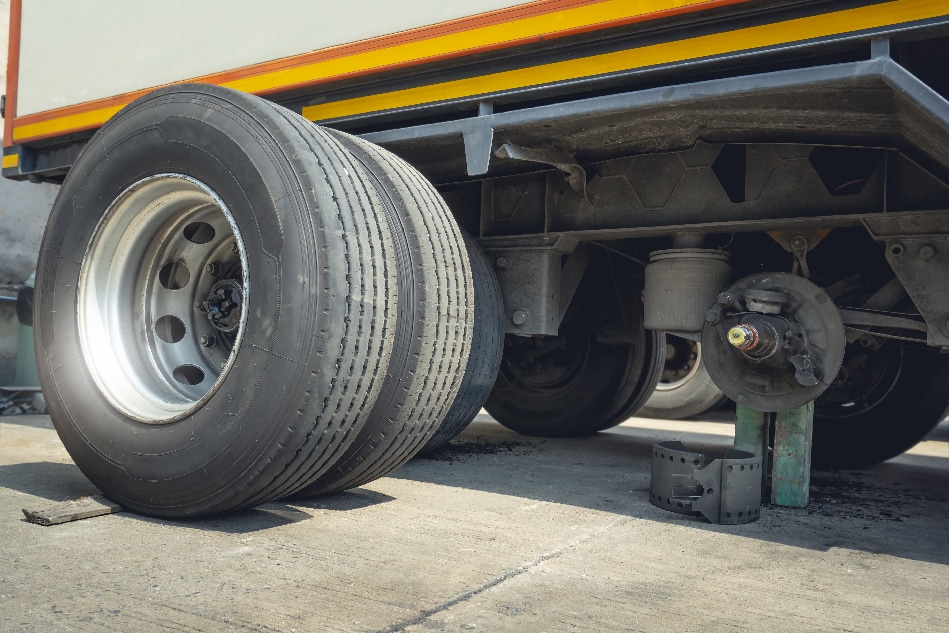
Tires and Wheels
- Tire pressure
- Wheels/rims
- Wheel nuts or fasteners
- Hubs
- Bearings
- Spare wheel
Body
- Panels and fittings
- Cabin condition
- Number plates
- Mudguards
- Mudflaps
- Rear marking plates
- Front underrun protection
- Horn
- Chassis
Seating Safety
- Seats
- Seatbelts
- Seatbelt light/indicator
- Child restraint anchorage
Couplings
- Fifth Wheel/Ballrace
- Pin Couplings/Pintle Hooks
- Towbar
- Safety Chains/Cable Attachments
- Steering and Suspension
- Steering Box/Pump
- Steering Wheel
- Free Play
- Arms/Linkages/Components
- Shock Absorbers
- Towing Attachments
Lights, Cameras, Reflectors, and Mirrors
- Headlights (both low and high beam)
- Fog lights
- Brake lights
- Reverse lights
- Blinkers/hazards (right/left, front and rear)
- Front position light
- Daytime running light
- Clearance lights (front and rear)
- Number plate lights
- Taillights
- Side marker lights
- Camera (front and/or rear)
- Dashcam
- Reflectors (all sides)
- Rearview mirrors
- Windscreen
- Windows and window controls
- Glazing
- Wipers, demisters, and washers

- Semi-Truck Checklist
- Engine oil level and state
- Engine oil filter
- Air filter
- Transmission fluid
- Brake fluid
- Driveshafts or CV joints
- Drive belt
- Serpentine belt
- Suspension
- Steering
- Fuel system
- Coolant/Cooling system
- Transmission and engine mounts
- Tires
- Wheels/rims
- Exhaust system
- Electrical systems
- Braking system
- Undercarriage and frame
- Seats and seatbelts
- Windshield, wipers, and wiper fluid
- Horn
- Headlights, tail lights
- Brake lights, blinkers, and reverse lights
- Auxiliary systems

- Diesel Truck Checklist
Diesel trucks are highly versatile trucks with both personal and commercial models available in the market. However, when it comes to maintenance, there’s not much difference between diesel trucks and gasoline cars. That said, some components are unique to a diesel vehicle, for example, diesel exhaust fluid (DEF).
Here’s a simple checklist for diesel trucks:
- Engine oil
- Engine oil filter
- Air filter
- Fuel filter
- Diesel exhaust fluid
- Coolant
- Engine cleaning and tune-up
Here are some tips regarding diesel truck maintenance:
- Diesel engines typically need an oil change every 5000 to 6000 miles, varying by model. However, you may need to replace it sooner if you use the truck frequently and that too for heavy-duty tasks.
- Air filters can easily be cleaned if they are dirty, but after a while, they may need replacement. If it’s too clogged and dirty, buy a replacement filter and replace it.
- Fuel filters need replacement every 10,000 to 15,000 miles. There are two fuel filters in diesel engines.
- Check the level of coolant from time to time and top it up if it’s low, as it will keep the diesel engine from overheating. Also, make sure to use the right coolant and dilute it if it’s not diluted already.
- Diesel trucks, especially those that do a lot of hauling or towing (for example, camper or boat), need engine cleaning and tuneup more frequently. Prolonged accumulation of dirt and grime can take a toll on engine performance and fuel economy.

- Bucket Truck Checklist
Bucket trucks serve a variety of purposes, fixed with a hydraulic boom and bucket to carry workers up. From electric companies to utility crews, bucket trucks are used in every town and city. Of course, these also require maintenance, not just for the engine and other parts of the truck but also the boom and bucket.
Visual Check
- Boom condition – welds, rust, damage
- Boom rest/cradle; pins, rings, bolts
- Bucket – mounting, door latch, safety
- Cylinders & hoses
- Hydraulic leaks – under truck & boom
- Loose/missing bolts, nuts, snap rings, cotter pins
- Outriggers
- Pedestal mounting bolts
- Safety decals
- Snow or ice buildup
- Tire condition & inflation
- Turntable – bucket van Lights:
- Welds; look under the vehicle
Body Integrity
- Sharp/Rusted
- Door Latches Windows Roll Up & Down
- Glass Mirrors (Cracked/Missing)
- Gas Cap
Pedestal Mounting Bolts
- Four mounting bolts connect the pedestal to the bed/frame
- Equipment Colored dye/paint mark on bolt and lock nut
- ¾" grade 8 bolts
- Torque to 160#
- Cargo Area Access
- Pedestal Collapse – Loose & Missing Bolts
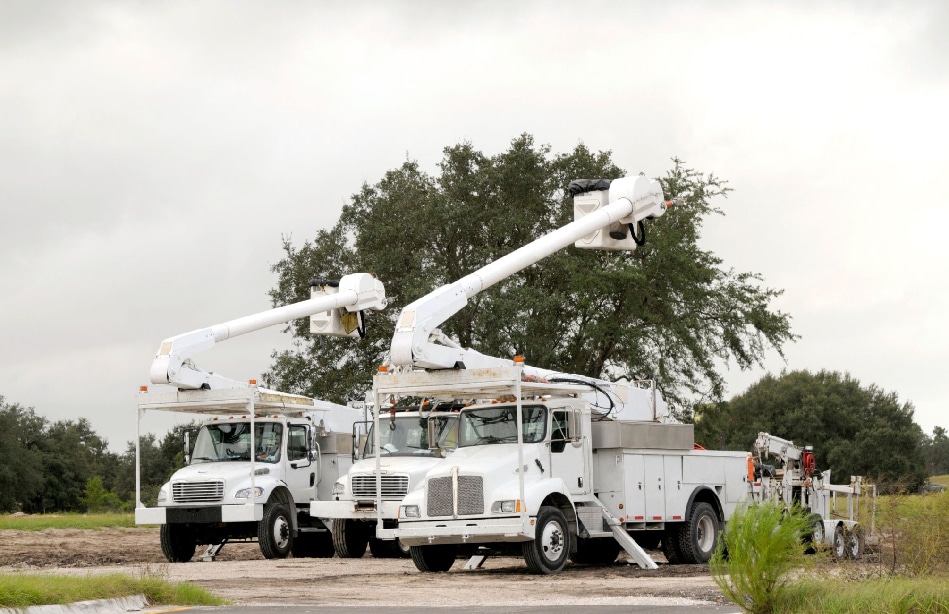
Fluids
- Brake Fluid
- Engine Coolant
- Hydraulic Oil Level
Operation Controls
- Lower & upper controls Boom
- Test hydraulic and 12 volts electrical
- "Safe operating condition"
- Test all switches/controls
- Emergency stop button works
- Defroster
- Wipers
- Horn
- Emergency Brakes
- Service Brakes
- Seatbelts
Lights
- Headlights
- Taillights
- Brake lights
- Reverse lights
- Blinkers
- Warning lights
Safety & Emergency
- Wheel chocks – minimum of 2
- Outrigger pads/mats
- Portable fire extinguisher – DOT 5 B:C
- Reflective triangles
- Petroleum spill kit
- Traffic cones
- Fall Protection
- Electrical PPE
- Spare fuses – 1 for each amp circuit
- Warning signs

- Food Truck Checklist
Food trucks are essentially like any other truck, except these are equipped with food appliances as well. Therefore, the maintenance checklist is a little different. Aside from the regular checks for the truck itself, you should also check the equipment on the truck for safety reasons.
Visual Inspection
- Wheels/tires
- Dents
- Cracks/marks on windows
- Belts, hose, lines
Emergency Equipment Check
- Tire jack/pump
- Jumpstart cables
- Ice scraper and road salt (for winters)
- Flashlight
- Emergency tool kit
- First aid kit
- Portable fire extinguisher
- Spare tire (air pressure in it)
Fluids
- Engine oil
- Brake fluid
- Wiper fluid
- Battery fluid
Other Periodic Checks
- Engine cleaning
- Cabin cleaning
- Seats and seatbelts
- Dashboard warning lights
- Interior lights
- Headlights, taillights, flashers, blinkers, backup lights, parking lights
- Cameras (both vehicle and security)
- Braking system (parking brake, braking pads, ABS)
- Horn
- Tow bar
- Battery
Daily Safety Checks
- Oil/gas leak in stove
- Switching off stove
- Unplugging electrical appliances
- Locking cabinets

- Fire Truck Checklist
While fire trucks may not be utilized every day, they serve a very important purpose. So they have to be in good condition at all times. This requires proper, timely maintenance of the vehicle as well as its fire extinguishing equipment.
- Engine oil/filter
- Fuel leaks
- Fluid leaks
- Braking system
- Tires air pressure
- Power steering fluid
- Coolant level
- Hoses
- Windshield washer fluid level
- Seat belt buckles
- Engine sound
- Suspension
- Battery fluid and terminals
- Gauges (check for normal ranges)
- Control system (intercom)
- Signal lights
- Audio devices
- Headlights, taillights
- Brake lights, reverse lights, parking lights
- Signal lights
- Emergency lights (strobe, flashing)
- Siren

- Forklift Truck Checklist
Forklifts or forklift trucks are used in warehouses, manufacturing plants, and factories. While these are essentially heavy machinery, these do require regular maintenance like that by any other type of truck.
Minor Maintenance (250 hours of use)
- Remove filler caps to release any additional pressure
- Replace engine oil and oil filter (see user manual)
- Top up your coolant and use antifreeze for winters
- Clean the engine cooling system
- Vacuum or replace the air filter
- Inspect the drive or fan belt for damage and tension
- Check the hoses for any leaks
- Refuel gas and check for leaks
- Check the fuses in the fuse box
- Add AdBlue
- Bleed the fuel system
- Refuel LPG and check for leaks
- Tighten the cylinder head bolts
- Adjust engine idle speed and ignition timing
- Check the meters and warning lights
- Listen to the engine for erratic sounds
- Check the color of the exhaust gases
Major Maintenance (500 hours of use)
- Change the fuel filter/clean the LPG filter
- Check and adjust valve clearance if needed
- Replace the spark plugs for gas-run forklifts
- Drain the water separator
- Clean the radiator
- Clean the radiator exterior
- Replace the fuel filter
- Replace the points, the condenser, and the set timing
Major maintenance (2,000 hours of use)
- Replace the coolant
- Check and replace fuel filter, fuel strainer element, and water separator
- Replace the distribution belt and other seals such as the gasket seal
- Clean or replace the interior ventilation filter
- Torque the engine head bolts and manifold nuts
Fork Maintenance (250 hours of use)
- Tighten loose nuts and bolts
- Clean the mast and lubricate it if needed
- Lubricate all lubrication points of the frame
- Visually check the mast and load protector for deformation
- Check the operation of the mast by using the lifting and tilting levers
- Check the shock absorber
- Lubricate the chain

- Garbage Truck Checklist
Garbage trucks should have a daily visual inspection, as well as periodic (weekly, monthly, and annual) maintenance checks for the health and condition of the truck. Garbage trucks also need frequent cleaning and subsequent checks.
Daily Inspection
- Body condition
- Back up alarm
- Tire inflation
- Check all gauges, including oil and temperature
- Visually check rims, wheel lug nuts
- Windshield washer operation
- Steps and grab handles
- Brakes
- Look for indications of oil leaks
- Horn
- Mirrors and glass
- Back up camera (if applicable)
- Hydraulic tank and gauge
- Heater, window defroster (for winters)
- Front, rear, and marker lights
- Mirror alignment
- Fuel tank
- Hydraulics operation
- Hydraulic leaks
- Work spotlights
- Fire extinguisher
Periodic Maintenance
- Engine oil
- Engine oil filter
- Air filter
- Transmission fluid
- Brake fluid
- Hydraulic lines
- Coupling devices
- Driveline
- Exhaust system

Summary
A truck maintenance checklist can be a lifesaver not just metaphorically but literally. Doing proper maintenance on trucks like bucket trucks and fire trucks can ensure these vehicles don’t fail in times of need.
Similarly, for other trucks, be it a personal diesel truck or a fleet of heavy-duty trucks hauling containers, maintenance is the key to ensuring great productivity and reliable safety.
A standardized maintenance checklist is hard to find. But you can use the checklists above and make your own to use periodically. Some maintenance may not be needed for months, while some items should be checked daily, so create lists accordingly.
In addition to checking and maintaining truck parts, it’s equally important to ensure safety features are in working conditions. Checking warning lights, brakes, reflectors, and fire extinguishers regularly can reduce the chances of accidents.
Regardless of the type of truck you have for personal or business use, maintain a maintenance history digitally or in a physical format. This will come in handy for subsequent maintenance checks. This will help replace parts timely, such as engine oil, filters, coolant or antifreeze, windshield cleaner, and other fluids.

